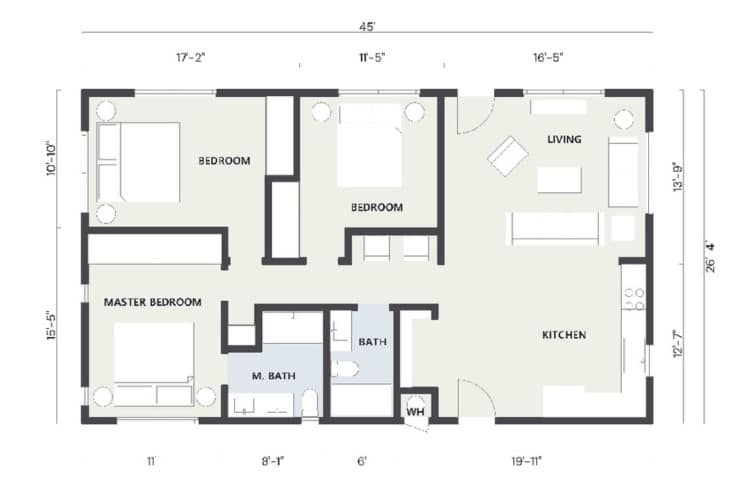What is a Casita?
47 min read
A casita is a self-contained, detached secondary home on the same lot as a main house, with its own entrance, kitchen, bathroom, plumbing, and electrical systems. Also called an in-law suite, guest house, granny flat, or pool-house conversion, it supports independent living while staying part of the main property. Sizes vary by region and zoning, usually a few hundred to about 1,200 sq ft, with most Southern California casitas between 500–800 sq ft. Casitas serve as guest housing, multi-generational homes, or rental units. Their versatility and self-contained design make them a popular way to add living space without leaving your property.

Casita Fast Facts
- Detached, self-contained dwelling with its own entrance, kitchen, and bathroom
- Typical size is ~200–1,200+ sq ft (SoCal builds often 500–800 sq ft)
- Includes independent plumbing, electrical, and HVAC systems
- Common uses are guest accommodations, long-term rental, multi-generational housing, home office, creative studio, or hobby space
- Popular design styles include traditional Spanish, modern, craftsman, or matched to the main house
- Typical project timeline is ~12–18 months from planning to completion (can be faster for prefab builds)
- Regulated as an Accessory Dwelling Unit (ADU) in California; subject to local zoning, setback, and permitting rules
- Often eligible for fee waivers or expedited permitting if under 750 sq ft in CA
- Adds significant property value and can generate rental income (long-term rentals only in many CA cities)
- Most common in the Southwest U.S., especially California, Arizona, Nevada, and New Mexico
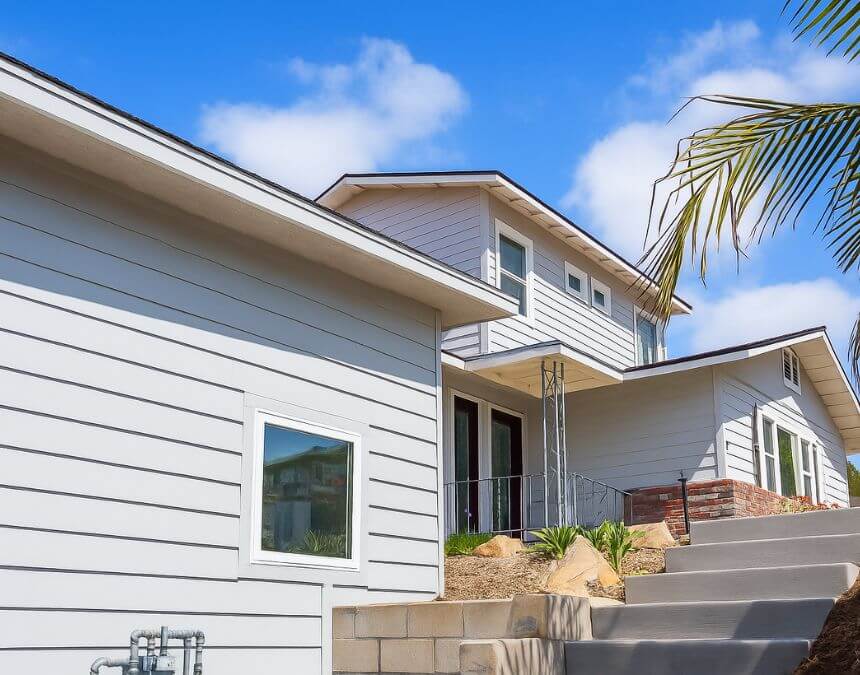
Always review zoning and permitting requirements before planning—early compliance checks can prevent costly design revisions later.
Casita Uses
Given that a casita is a small house located behind a residential property, it offers all the functionality of a small home or ADU. It can be used as a guest house, a granny flat, or a source of extra income. It can be a hybrid space, a home office, yoga studio, art studio, or music studio, plus additional storage space. Ultimately, how you use your casita depends on your lifestyle.
Private Casita Guest Suite Benefits
A casita makes an ideal private guest suite, offering visitors their own entrance, bathroom, and kitchen for comfort and independence. This setup ensures both hosts and guests enjoy privacy, and it can boost your home’s appeal for future resale by marketing it as a fully functional guest house.
Long-Term Casita Rental Income Potential
Renting out a casita on a monthly or yearly lease can provide steady supplemental income. In San Diego, for example, a two-bedroom casita can rent for roughly $2,500–$3,500 per month depending on the neighborhood, design, and amenities (RentCafe).
Using Casitas for Short-Term Rental (Airbnb)
Casitas are often seen as perfect Airbnb units—but in California, many cities (including San Diego) restrict ADUs from being rented for fewer than 30 consecutive days. Always check local short-term rental rules before listing your casita on vacation platforms (San Diego STRO).
Multi-Generational Living / Aging in Place for Casitas
Casitas offer a safe, private home for aging parents or adult children while keeping them close by. Having a casita close but private is very helpful for families. More families are living with multiple generations in one home. Sixty-one percent of ADU owners say this is their main reason for building one. (Housingwire / AARP)
Make a Casita into a Home Office / Creative Studio
A detached workspace can reduce distractions and commute time, making a casita perfect for remote work. It can also double as a creative space—whether for an art studio, music room, or yoga practice—without taking over a room in the main house (Your Steam Home)
Using Casitas for Flexible Transitional Housing
Casitas can serve as temporary housing during home renovations, a place for friends or relatives in life transitions, or even a spot for homeowners to live while renting out the main house. This flexibility is very useful in places where many people want to live. A survey of Los Angeles ADU owners found that 76% used the ADU as a residence for themselves, family, or caregivers. Many others used them as guest rooms or business spaces. Some owners said they changed how they used the ADU over time based on their needs. (Rebecca Crane, UCLA)
Hobby / R&R Room
With a casita, you can dedicate space to leisure: set up a home theater, game room, or reading nook without disturbing the main living areas. Some homeowners also use casitas as fitness rooms or spas, creating a true retreat on their property (Double R Builders).
Casita Storage Solutions for Seasonal and Business Items
If permitted by local zoning and building codes, casitas can include significant storage for seasonal items, sports gear, or business inventory. This is especially helpful for smaller primary homes where storage space is limited (CA ADU Handbook).
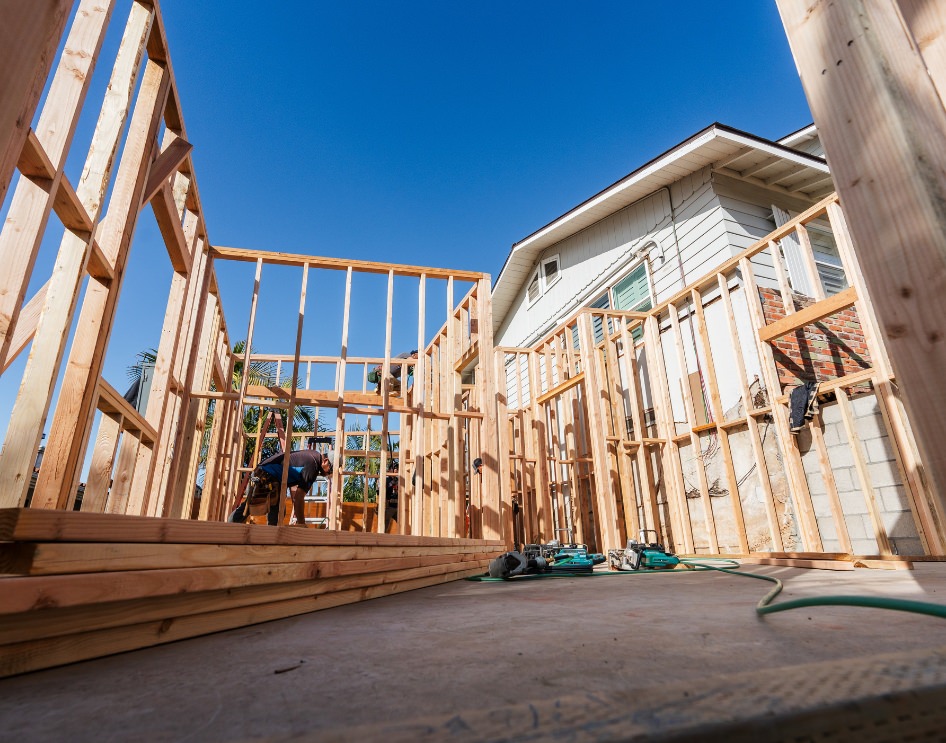
Modern casitas combine functionality and style, offering a complete living experience in a compact footprint.
Origins & Why They’re Trending
The word casita comes from Spanish and means “little house.” It reflects building styles from Spain and Mexico. In those places, small separate homes were built next to main houses for family or guests. (Rosie on the House) In the American Southwest, especially California, Arizona, and New Mexico, casitas became part of the local style. They are often made of adobe or stucco and have tile roofs. They serve as comfortable, self-contained living spaces near the main house.
Casitas have surged in popularity in recent years due to a combination of social and economic factors. Housing shortages and rising home prices have made accessory dwelling units (ADUs) an attractive way to increase living space without buying a new property. They offer privacy and flexibility for multi-generational living—61% of ADU owners cite this as a primary reason for building one. The rise of remote work has further boosted demand, as homeowners seek dedicated office or creative spaces at home. In addition, casitas can generate rental income in high-demand markets, adding both functionality and long-term property value.
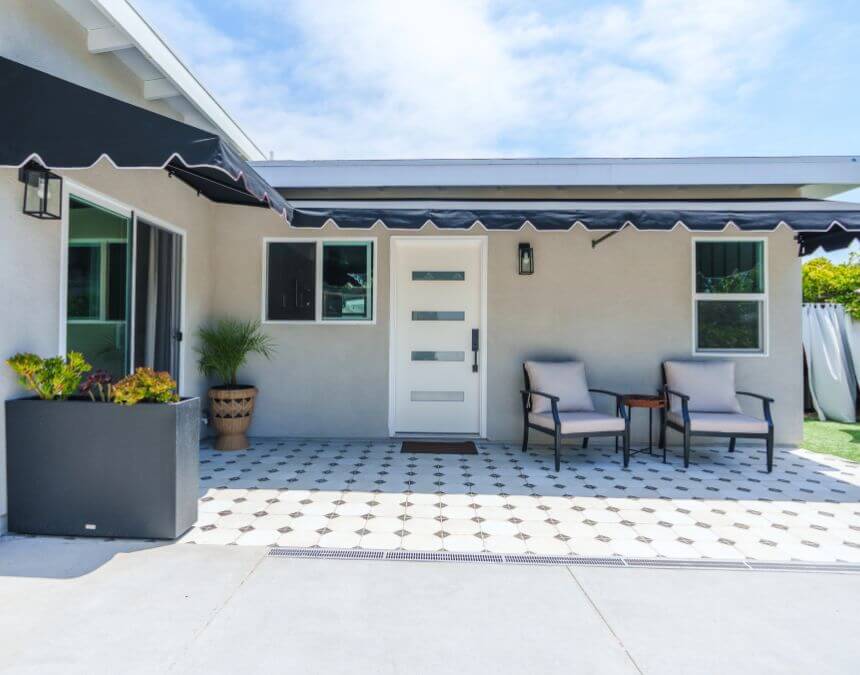
Rising housing demand, multi-generational living, and rental potential make casitas one of the smartest investments for San Diego homeowners.
What is the Average Size of a Casita?
To be considered a true casita, a detached living space must be less than 800 square feet, and most casitas are typically even smaller than that, clocking in at around 500 square feet. While this might not seem like much, this amount of square footage can make a huge impact on quality of life, giving additional space for multi-generational living or generating thousands of dollars in additional rental income every month.
A builder who is experienced in auxiliary living spaces and the construction of ADUs will be able to comfortably design a 1 or even a 2 bedroom casita with in-unit laundry.
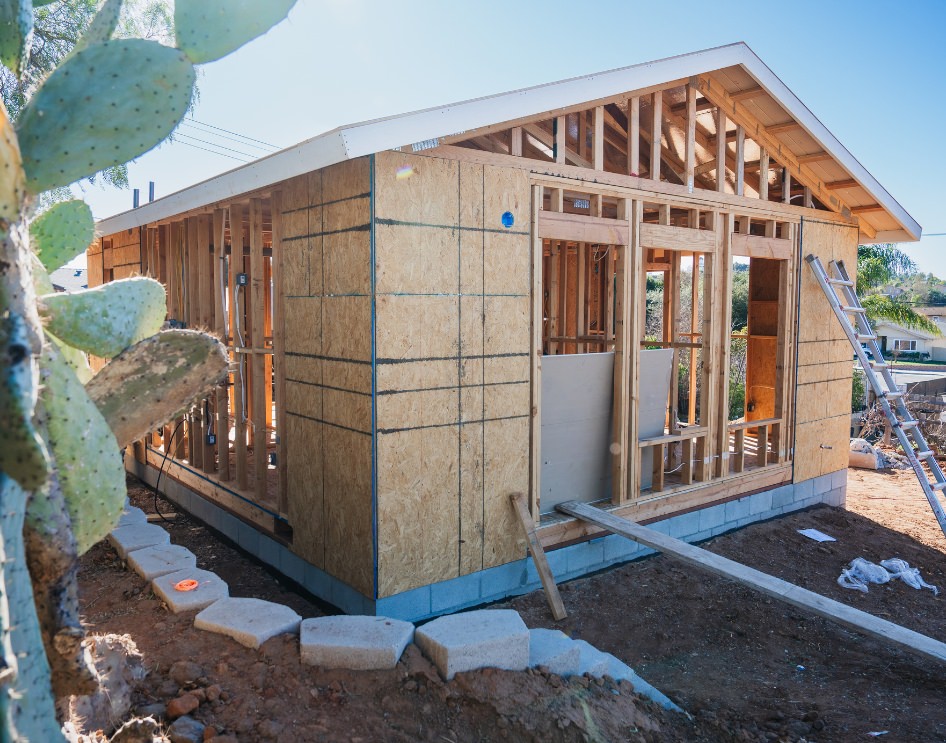
Most casitas average around 500-800 sq. ft., balancing space efficiency with enhanced living possibilities.
What’s the Difference Between a Casita and an ADU?
California law calls all casitas Accessory Dwelling Units (ADUs). But not all ADUs are casitas. A casita is usually a small, separate second home. It is common in Southwestern states. It has its own entrance, kitchen, bathroom, plumbing, and electrical systems.
ADUs are a wider legal category. They can be attached or detached from the main house. They may be built over a garage, called a carriage house, or as part of another building like a barndominium. Many places allow ADUs up to 1,200 square feet. Like casitas, ADUs must have a separate entrance, a kitchen, and a bathroom to meet code.
Pool houses, on the other hand, are not usually considered ADUs because they often lack a full kitchen and/or bathroom. Without these amenities, they do not qualify as legal dwelling units in California.
Key takeaway: If it has a full kitchen, bathroom, and is built to residential code, it’s an ADU—and if it’s detached and in the Southwestern style, it’s often called a casita. Without those features, it’s just a pool house and not considered a dwelling unit under California law.
Below is a quick comparison:
| Feature / Structure | Casita | ADU (General) | Pool House (Typical) |
|---|---|---|---|
| Detached | Yes | Can be detached or attached | Usually detached |
| Kitchen/Bath Required | Yes | Yes | No (often just bath or none) |
| Legal Category in CA | ADU | ADU | Not an ADU |
| Typical Size | 200–1,200+ sq ft (SoCal often 500–800) | Up to 1,200 sq ft (per zoning) | Varies, often smaller |
| Primary Use | Independent living (guest, rental, multi-gen) | Independent living, flexible layouts | Recreation, poolside amenities |
Size & Layouts
Casitas come in a wide range of sizes, and the exact maximum is determined by local ADU regulations rather than a single hard limit. Many Southern California casitas are between 500 and 800 square feet. State and city rules often allow up to 1,200 square feet for a detached ADU. In some areas, certain lots can hold up to 1,500 square feet if zoning rules allow.
Typical Size Ranges
- Small Casitas: ~200–500 sq ft — best for studios or efficiency layouts
- Mid-Sized Casitas: 500–800 sq ft — most common for 1-bedroom or large studio units
- Large Casitas: 800–1,200+ sq ft — allows for 2–3 bedrooms or expansive living space (where zoning allows)
Bedroom & Layout Planning
- Studio / Open Plan: Compact kitchen, combined living/sleeping area, full bath. Ideal for guests, offices, or short-term stays.
- 1-Bedroom Casita: Separate bedroom, living area, full kitchen and bath. Comfortable for long-term rental or family use.
- 2-Bedroom Casita: Works well for small families, multi-gen living, or higher rental yield; requires efficient circulation and space-saving features.
- 3-Bedroom Casita: Possible in larger ADUs (900–1,200+ sq ft) where local code permits; often designed for multi-generational households.
Pro tip: Regardless of size, smart space planning is key. Features like vaulted ceilings, built-in storage, and open-concept kitchens can make even smaller casitas feel spacious and livable.
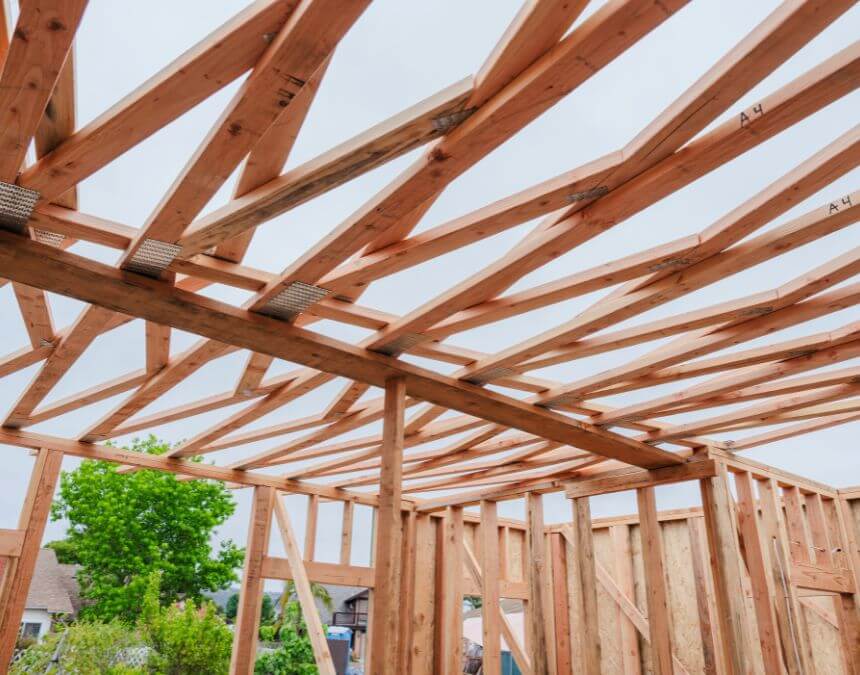
Choose layouts based on intended use—a one-bedroom casita offers flexibility for rentals or family, while studios are perfect for compact guest suites.
Why Build a Casita? Benefits for Homeowners
Casitas share another important similarity with ADUs: they can add tremendous value.
We already touched on their versatility of use as an in-law apartment or a rental property, but it’s worth reiterating because, for many families in the San Diego area, it’s this versatility that can help financially with the competitive and expensive Southern California housing market.
Casitas and ADUs also increase a property’s overall value significantly, meaning that a casita doesn’t just make your immediate living situation more comfortable, but it puts additional money in your pocket when you do ultimately look to sell.

Building a casita can significantly enhance property value and provide flexible living or rental options.
How Much Does it Cost to Build a Casita in California?
The cost of building a casita can vary significantly based on size, design, and location. Statewide, many sources cite a range of about $50,000–$200,000 for smaller or basic builds, but in high-cost markets like San Diego, most stick-built projects start around $200,000 and can reach $500,000+. Larger units with premium finishes, complex site prep, or multi-bedroom layouts are typically at the higher end of that spectrum. You can use our Casita Cost Calculator for a ballpark figure, or request a consultation for a customized estimate.
Key Cost Drivers
- Size of the unit – More square footage increases material and labor costs.
- Labor rates in your area – Higher in coastal or urban markets.
- Site preparation – Grading, demolition, retaining walls, or access issues.
- Finishes – Flooring, cabinetry, appliances, and fixture quality.
- Utilities & septic – Extending or upgrading water, sewer/septic, electrical, and gas service.
- Permit & impact fees – May be reduced or waived for ADUs under 750 sq ft in California.
Financing Methods for Building Casitas
Building a casita is a major investment, but there are multiple financing paths:
- Home Equity Loan – Fixed-rate loan secured by your home’s equity.
- HELOC (Home Equity Line of Credit) – Flexible, revolving credit line for draw-as-you-go funding.
- Construction Loan – Short-term financing for the build phase, often converted to a mortgage.
- Specialized ADU Financing – Some California cities and credit unions offer programs for ADU construction.
We recommend reviewing our ADU & Casita Financing Guide to compare terms, rates, and qualification requirements.
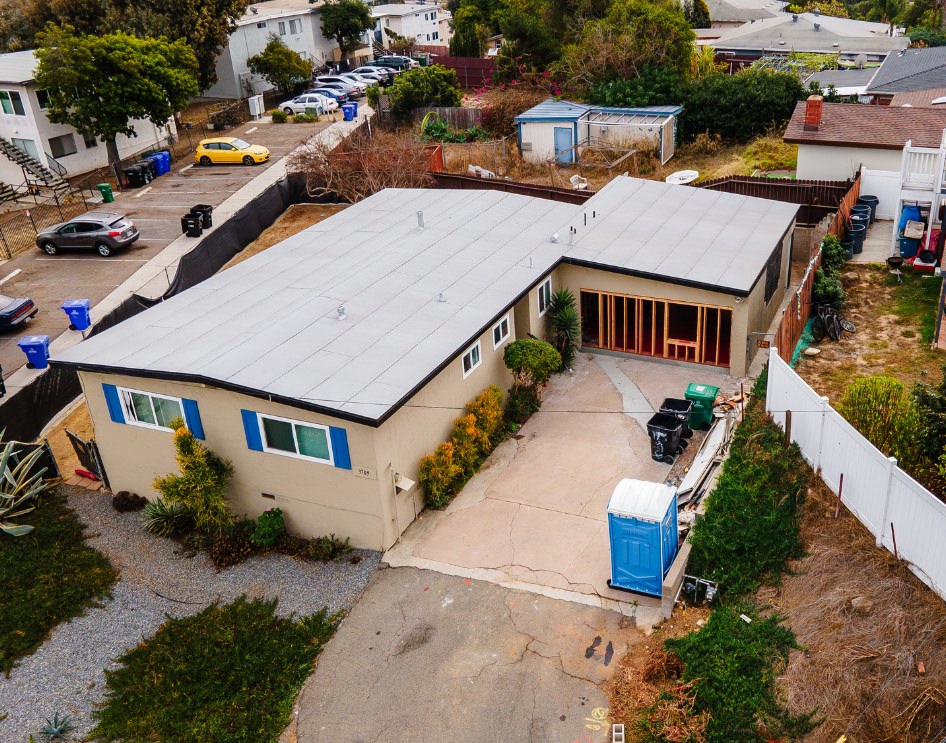
Site preparation and quality materials play a key role in managing casita construction costs effectively.
Permitting, Zoning & Utilities for Casitas in San Diego
If you build a casita in San Diego, you must follow the city’s Accessory Dwelling Unit (ADU) rules. These rules are usually more flexible than in many other cities. Below are the key points to know before you start your project.
- Maximum Size (Detached ADU) – The City of San Diego allows detached ADUs up to 1,200 sq ft in most residential zones, provided they meet height and lot coverage limits. State law sets a baseline max of 1,200 sq ft, but some parcels may have additional restrictions depending on zoning overlays.
- Setbacks & Parking – California’s standard ADU rules require at least 4-foot side and rear setbacks, but San Diego is unique: single-story ADUs under 16 feet tall may be built with 0-foot side and rear setbacks in many zones, allowing you to maximize buildable area. Parking is not required if your property is within a half-mile of public transit or if you are converting an existing structure.
- Utility Connections – Your casita will need connections for water, electricity, and sewer. Extending these services can add significant cost, especially if trenching is required. For properties not on a municipal sewer line, a separate septic system may be required, which can add both expense and permitting complexity.
- HOA or Master-Planned Community Rules – While California law prevents HOAs from banning ADUs outright, they can still enforce reasonable design guidelines such as exterior finishes, roof style, and landscaping. Some master-planned communities may have stricter aesthetic requirements or review processes even when city zoning allows a casita (CalMatters).
You can also review the official requirements on the City of San Diego’s ADU Program page to confirm the latest rules before starting design.
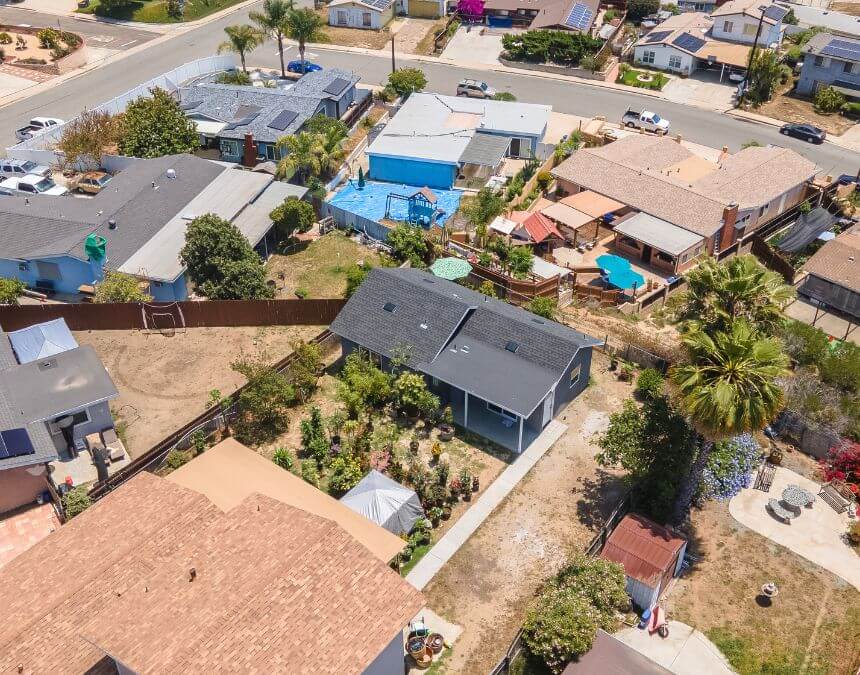
Always confirm your property setbacks and utility access before design—these factors often determine the maximum casita size and overall project cost.
Will a Casita Add Value?
Adding a casita can make your property more attractive and increase its market value. The exact effect depends on your location, how well it is built, and buyer interest. One widely cited analysis by the National Association of Realtors, found that homes with an ADU sell for roughly 35% more on average than comparable homes without one. This figure is just one data point, but it underscores the strong market appetite for properties with additional, independent living space.
According to NAR, about one-third of homebuyers say they would be willing to pay more for a property with a casita or similar secondary dwelling. That demand stems from the flexibility an ADU offers—whether as rental income potential, space for multigenerational living, or a dedicated home office.
In our local San Diego market, we often see appraisal comps for well-designed casitas adding 20–30% to a property’s appraised value compared to similar homes without an ADU. In many cases, the increase in equity comes close to matching or exceeding the total construction cost—especially when the casita is built to match the main home’s quality and aesthetic.
When combined with potential rental income, the value-add can make a casita one of the most financially rewarding upgrades a homeowner can undertake.
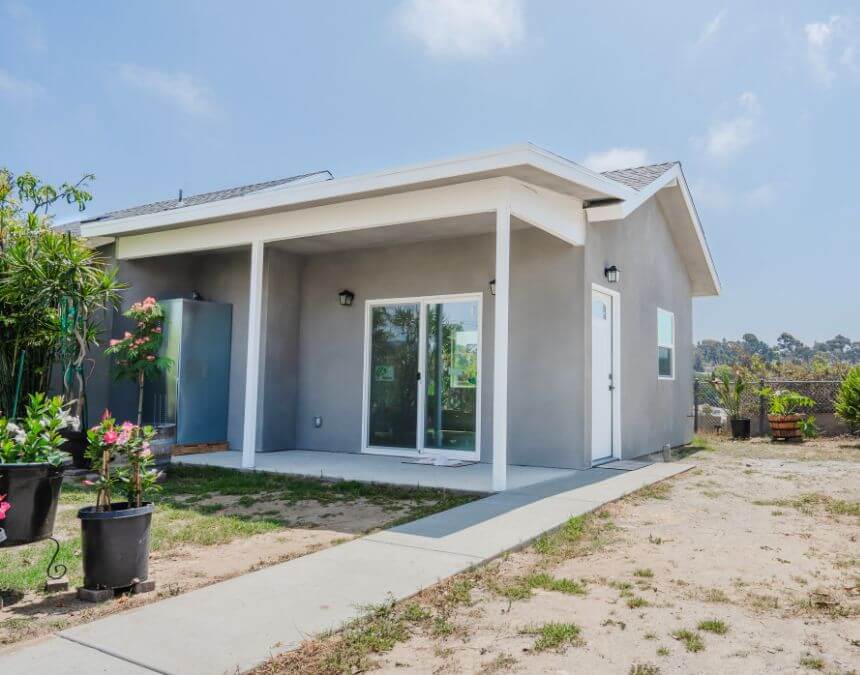
A well-built casita can increase property value by 20–30% in San Diego—matching finishes to the main home ensures maximum appraisal and resale impact.
Casita Design Options: Tailoring to Your Needs
A smart floor plan will make your casita as functional as possible, but a tailored, custom design will make it feel like yours.
While the traditional Spanish style is a natural design choice for casitas, it isn’t required. If your existing home has a more modern design, you can mirror the exterior so your two structures blend perfectly, creating a cohesive feel on the property.
Customizable Casita Floor Plans
Custom design not only increases the curb appeal of your casita but also ensures you’re getting the most out of your build. Everything can be tailored to your exact property lines, your exact budget, and your intended use.
While our vetted floor plans are a great starting point for helping you narrow down what’s important to you, we tell property owners that they only get you about 80% of the way there. Especially when it comes to compact spaces like casitas, every detail matters and can take your income property or guest house to the next level.
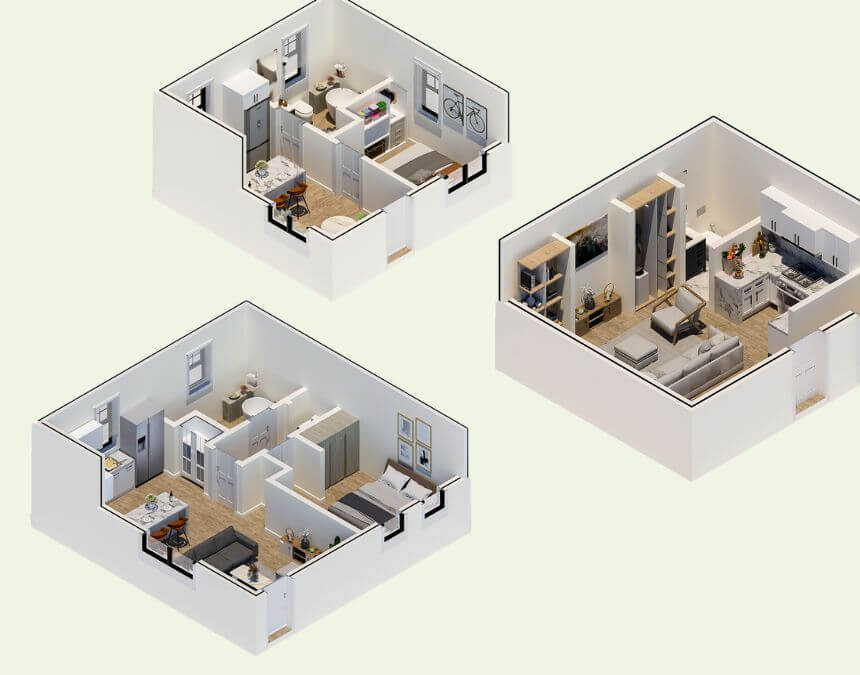
Tailor every detail to your lifestyle—a customized layout ensures maximum functionality and efficiency in compact spaces.
Aging-Parent Casita – Scripps Ranch Detached ADU
In Scripps Ranch, we built a 500 sq ft detached ADU designed specifically as a comfortable and private suite for an aging parent. This airy 1-bedroom, 1-bath unit blends coastal charm with modern elegance, featuring a bright open-concept living area, a sleek kitchen with gold-accent hardware, and a spa-like bathroom. Accessibility was a priority—wide doorways, a step-free entry, and an easily navigable layout ensure safety and ease of movement. The detached design allows for privacy while keeping the parent close enough for daily support. It’s also versatile enough to serve as a guest house or premium rental in the future.

Include accessibility features like step-free entry and wider doorways to make casitas safe and comfortable for aging parents while keeping future resale value in mind.
Rental Casita – Mira Mesa Garage Conversion
In Mira Mesa, we transformed a 550 sq ft garage into a fully self-contained 1-bedroom, 1-bath rental aimed at the student and young professional market. Located near both universities and the coast, the space features bright, modern interiors, soundproofing for privacy, and a dedicated parking spot with a private entrance. These features make it especially attractive for long-term renters who want quick access to campus, work, or the beach. The unit uses natural light well. It has strong, easy-to-care-for finishes. This makes it valuable for rent and easy for the homeowner to manage.
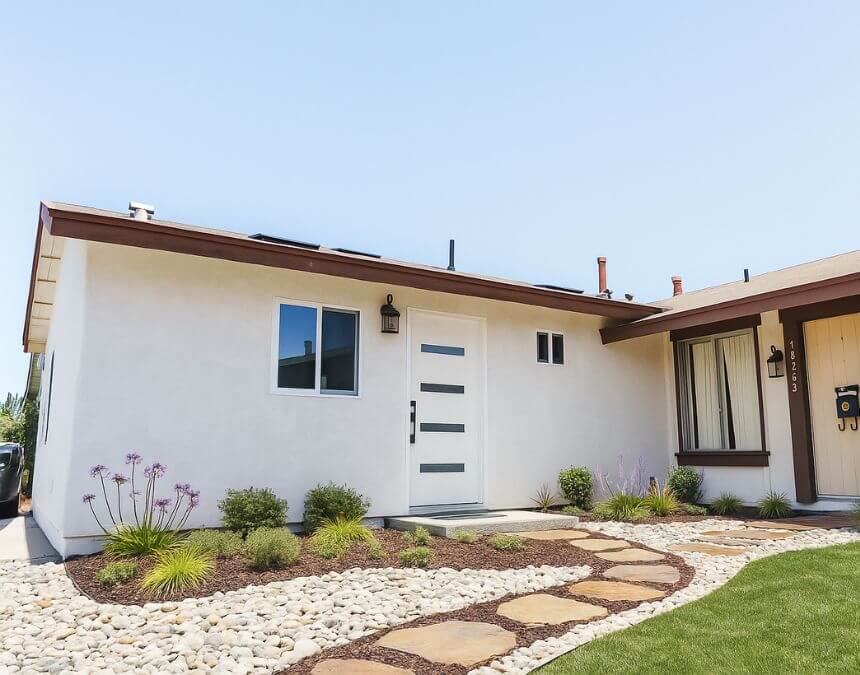
Garage conversions maximize existing space and reduce construction costs—ideal for long-term rental income in high-demand markets like San Diego.
Why Choose Better Place Design & Build for Your Casita Project?
Better Place Design & Build understands that any homeowner undertaking a casita build is making a significant investment, both with their time and their money. That’s why we strive to make every build as smooth as possible, helping our homeowners understand and navigate the local laws and the permitting process to jumpstart a stress-free construction process.
In most cases, we can build you the casita in your dreams between 8-12 months, and it all starts with a free consultation. Schedule yours today to see what’s possible.
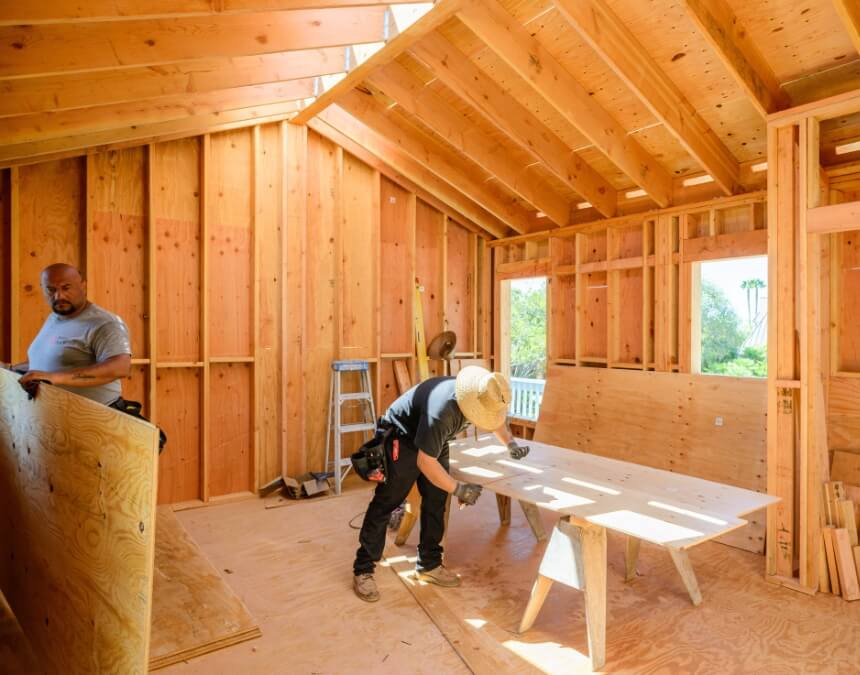
Partnering with an experienced ADU builder ensures your casita project stays on budget and timeline—expert project management reduces delays and costly mistakes.
FAQs
A house is a primary residence, typically larger and serving as the main dwelling on a property, while a casita is a smaller, secondary dwelling unit located on the same lot. Casitas are usually under 800 sq. ft., designed for guests, rental income, or multigenerational living, and function independently with their own entrance, kitchen, and bathroom.
Casita means “little house” in Spanish and refers to a detached accessory dwelling unit (ADU), typically found in the Southwest. It provides a fully functional living space with a kitchen, bathroom, and sleeping area.
A casita is a small, independent living space often built in a backyard or as part of a larger residential property. While traditionally Spanish-style, casitas can be designed in various architectural styles to match the main home.
Not exactly. While both provide additional living space, a guest house is typically used only for temporary stays and may not always have a full kitchen or be legally designated as a separate dwelling. A casita, on the other hand, is a fully functional unit with a kitchen and bathroom, making it more suitable for long-term living.
Legally, a casita falls under the category of an accessory dwelling unit (ADU), meaning it must comply with local zoning and building regulations, including size limitations and requirements for a separate entrance, kitchen, and bathroom.
The number of occupants depends on the size and layout, but most casitas can comfortably accommodate 2-4 people. A larger casita with a second bedroom or loft may sleep more, depending on its square footage and design.
Yes, for a casita to be considered an ADU, it must include a fully functional kitchen with appliances, cabinetry, and a sink. However, some guest houses or pool houses without a kitchen may still be referred to as casitas informally.
Yes, a casita must have a bathroom with a toilet, sink, and shower or bathtub to be classified as a legal dwelling unit. This makes it a self-sufficient living space suitable for long-term stays or rental use.

